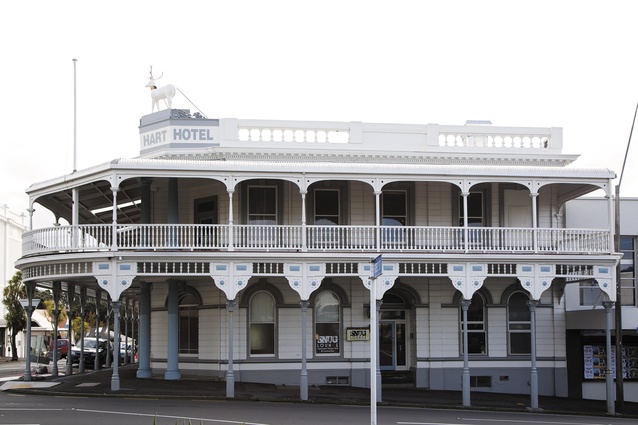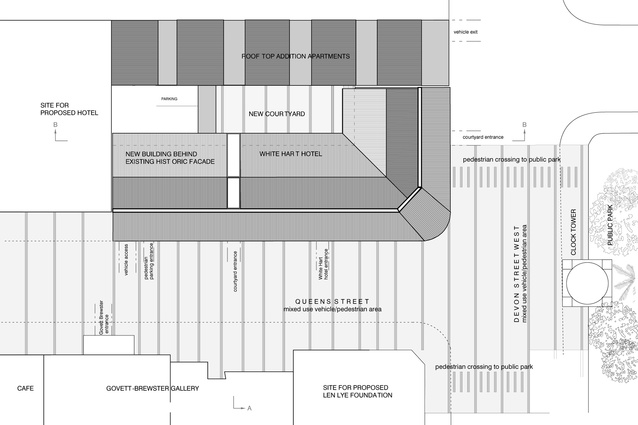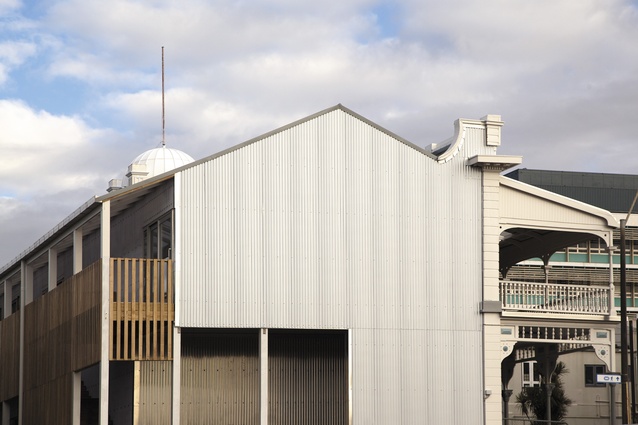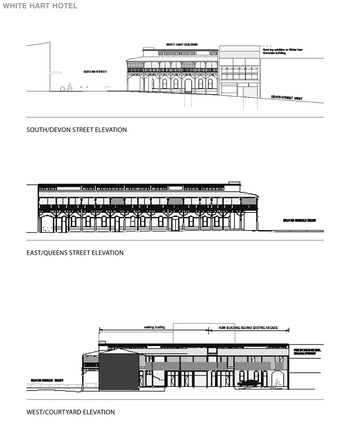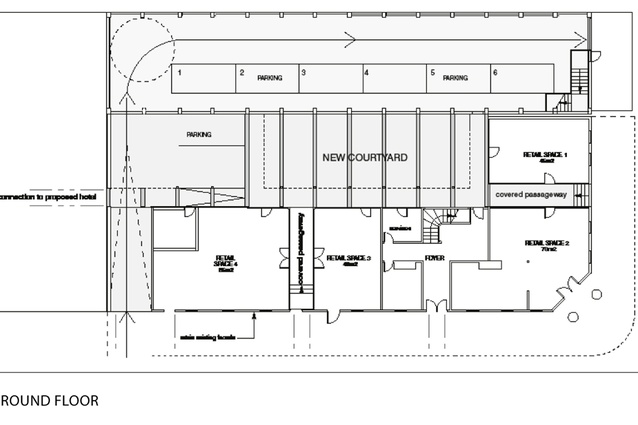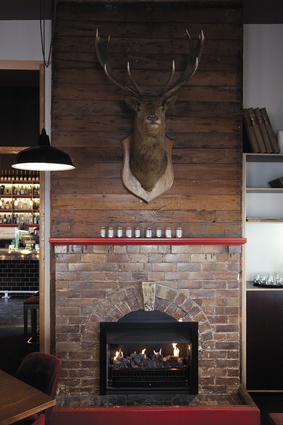White Hart Hotel
New Zealand’s provincial towns and cities are typically remembered for their pubs and town clocks, and sometimes for their churches. But, it is the local pub that becomes the most fascinating cultural vault: capturing the layers of local stories, the fashions over time and, in this case, a large dose of notoriety.
The White Hart Hotel in New Plymouth is and isn’t your typical Kiwi hotel. Built in 1886, it is your classic timber Victorian construction: homestead-like with two-levels of verandah. Its corner entrance leads out onto the city’s main drag, Devon Street West, which is part of the city’s growing cultural precinct and includes the neighbouring Clock Tower, the Govett-Brewster Gallery and the stunning coastal walkway, featuring Len Lye’s Wind Wand.
The original building on the site was a six-roomed house built in 1844 by Mr R Rundle, just four years after the foundation of the New Zealand colony. It is recorded that the builders worked three days of the week, were drunk on the other three, with Sunday to recuperate, so it most likely took some time to build. During its life, it was known as the Refuge for the Destitute, a provider of temporary accommodation for settlers, and Bleak House when the British redcoats used it as a hospital in 1855. When troops were treated there during the New Zealand Wars, the name ‘Itch Hospital’ was adopted. In 1859, the house turned into a hotel and was sold for removal by auction in 1886.

The first section of the current White Hart Hotel was designed, by New Plymouth architect James Sanderson, in an Italianate palazzo style and constructed in rimu and matai. Around 1901, it received its icon - a life-sized stag statue that still sits above the parapet. The building’s distinctive balconies, which run the extent of the façade, were added in 1909.
However, those who are familiar with the city will know the White Hart for its infamous reputation; it probably has the longest and most colourful history of any of New Zealand’s pubs. Some of this notoriety lends itself to a highwayman, Robert Wallath, who, in 1893, stalked into the White Hart and bailed up the barman, commanding, “Bail up, give me money, for money I’ll have”. He pointed his pistol at the barman and added, “Stand aside or I’ll blow your bloody brains out”, then rode off on his horse with a haul of change and a bottle of whisky, firing a shot as he rode past the police station.
During the 1970s, the White Hart sat at the vanguard of hotels as music venues, creating Taranaki’s own rock and punk music scene that attracted a line-up of Kiwi musicians, including Midge Marsden and the band Sticky Filth. In 1977, it became home to the notorious Magog Motorcycle Club who mingled with people from all walks of life. The dozens of bikes parked outside the historic façade became a feature, along with its unruly reputation for “sex, drugs and rock ’n’ roll”, heightened by a good many drunk and disorderly related court cases, and worse.
Meanwhile, in recent decades, the building deteriorated into a serious state of decay. Despite being a ‘category 1’ registered historic place with some financial support from the New Zealand Historic Places Trust, the cost of full restoration was prohibitive and meant that some of the building and half the façade was authorised for demolition. In 2005, the owner, Renaissance Ltd, discussed its predicament with Wellington practice Atelierworkshop, which came up with a plan to restore the façade and replace the derelict parts with a modern flexible addition, while retaining as much of the character of the building as possible – all on a $900,000 budget. Architect Cecile Bonnifait explains that, “To save this building, we had to make the design cost-effective and flexible for the future, so we could keep the iconic front façade”.
The ground floor has now been rebuilt, while the second floor will be transformed, when a tenant is secured, most likely into office space. Getting the Snug Lounge on board as a tenant has enabled many of the works to happen. This key ground-floor space is pure comfort in the English country-house style, fitted out with a stuffed stag over an original open fire, luxe velvet seating, and timbers and features from the demolished elements. It still has the feel of its former existence as the Red Lounge; it’s a bit rock ’n’ roll, maintaining intimacy and with the faint air of debauchery that one might hope for in a place like the White Hart. Adjacent, on the ground floor, there is also space ready for two retail tenants.
The modern addition on the back façade is constructed from cost-effective materials: timber and white corrugated polycarbonate sheeting that draws light into the building, reducing the need for windows. Atelierworkshop has created an internal courtyard, which Bonnifait describes as “a new corner of the city – a lively space that will add to the cultural precinct”. An alleyway from the courtyard connects onto the street. A courtyard bar has a farmyard feel, drawing on the ’naki’s agricultural roots; it’s economical and robust with working man’s detailing, including slatted floorboards and concrete.
During the build, cobblestones from the original 1844 house were uncovered and Atelierworkshop designed a glass floor over the top to provide visitors with an experience of the site’s earlier settlement. The old ceiling structure from the 1886 building has been left uncovered and a ‘category 1’ heritage staircase was cleaned up ready for future restoration.
The paint colours on the historic façade – gleaming white with accents in soft blue and grey – are very pretty, although more intricate detailing in the layering of colours or tones might have lent it more finesse. But, like so much of this scheme, it’s an opportunity for the future when funds flow more freely.
While Australia has saved many of its heritage country hotels – built in masonry with steel verandahs in contrast to our wooden versions – it is wonderful that one of New Zealand’s few remaining heritage hotels has been rebuilt, especially such an outstanding example with its unique contribution to the city’s streetscape and one which serves as its cultural vault as well. Atelierworkshop has admirably retained the spirit of the building whilst adding another fascinating layer of history, even if it isn’t notorious.
The White Hart is sited opposite a vacant plot that will become Patterson Associates’ Len Lye Centre – a futuristic sculptural building in gleaming stainless steel – yet to be built. The pair will provide a striking contrast between New Plymouth’s old and new buildings. This type of juxtaposition is an important reminder that New Zealand does indeed have an important architectural and cultural history – even if it isn’t lengthy – and that all well-designed buildings can be our heritage in the future.

